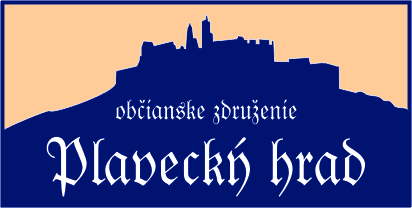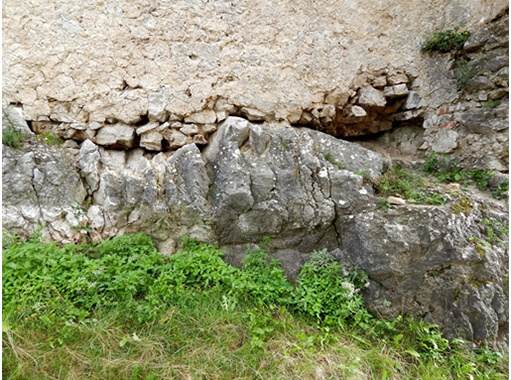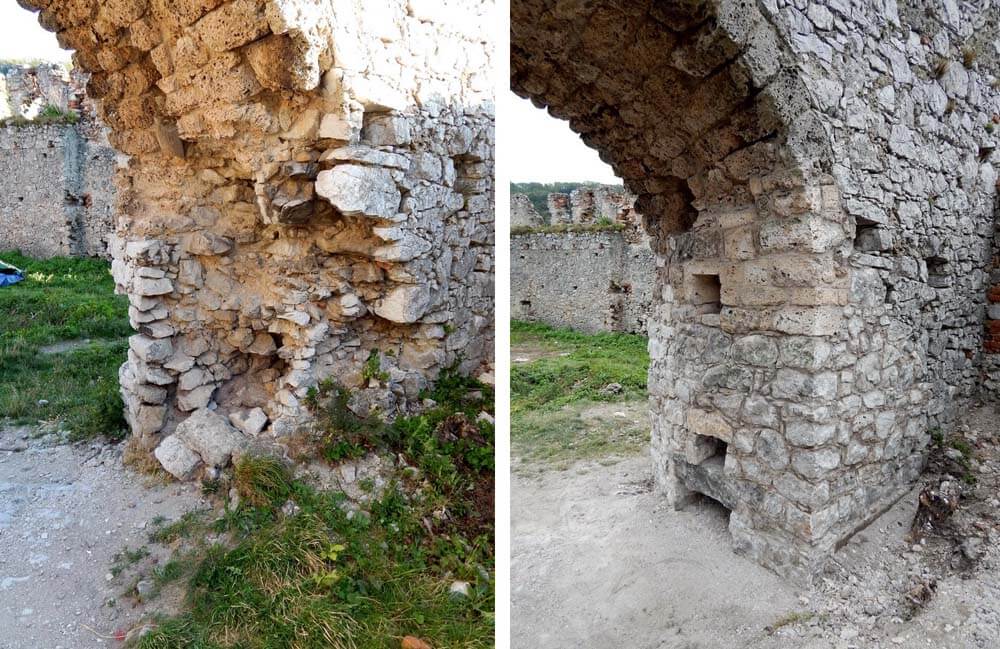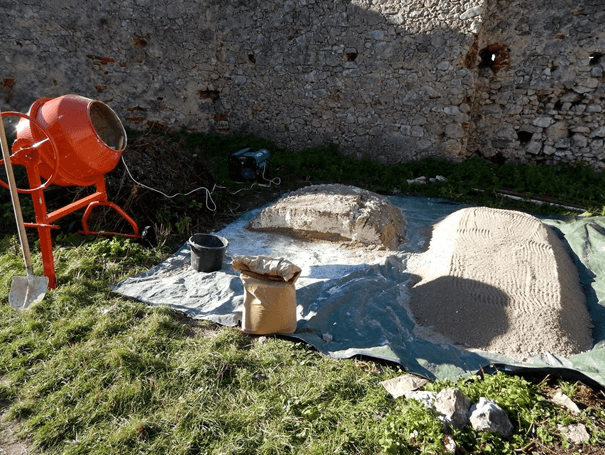Total view at Plavecký castle from Plavecké Podhradie
2013 was a ground-breaking year for Plavecký Castle, particularly because after more than 300 years, the caste objects have been restored and statically reinforced and the brickwork has started to increase rather than decrease. In the past years, static and architectonic-historic research of the selected objects has been performed.
Thanks to the support of the Ministry of Culture of the SR via the grant program “Restore your House”, a successful securing activities for the entry gate objects and renaissance gate to south ravelin could start this year. Thanks to new information after discovery of the masonry of the original caverns marked 2a and 2b in a cannon bastion, it was found out that the original caverns, which should have been walled in were destructed cannon crenelle, for which the terrain needed to be archeologically dropped to their original level before their renovation, research discovered crenelle structures and plan their reconstruction. That is why the expert sponsor of the project consulted KPU Bratislava and after their approval it was decided to change the project and stop the restoration works marked 2a and 2b and the works should prioritize statically damaged object of the renaissance gate, which might collapse at the part of the crown of arch of the gate and therefore endanger the visitors of the castle.
Entry gate
Gate Tower is a three-floor renaissance object belonging among the most preserved parts of the castle. Its most conserved parts are east, west and south external wall. From the point of view of its total stability or risk of damage, the most unstable was the south (entry) external wall of the tower, which is planned for a restoration in 2nd stage in 2014. In 2013, the cavern was maintained in the volume of 1,5 m3 in the wall foundation, which stabilised the entire east wall of the tower and prevented its possible destruction.
Renaissance gate of the south ravelin
The object of renaissance gate was statically damaged by the absence of scuntions and onset of gate crown of arch, which might collapse. Static reinforcement involved masonry works on scuntions and renovation of construction apertures of the gate, such as the bed of door latches and hinges of the door wings. After that, missing parts of the crown of arch were renewed by using the original material – tuff stone in order to keep the renovation authentic.
The entire works at the given objects were done by quality manual work, while using original materials (stone collected from the surface of the castle) and technologies (preparation of middle age hot lime mortar with usage of pozzolan additives – Metakaolin). The works took place at the end of summer, whereas this time period gave us enough time for the carbonisation of mortar before freezing weather.













